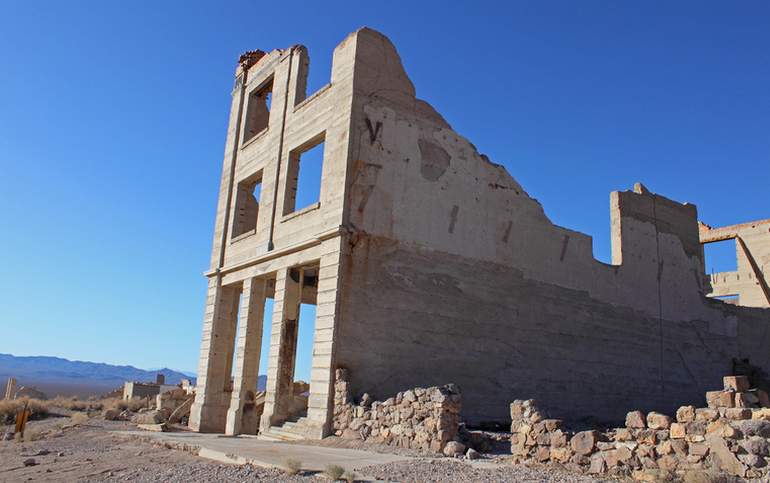
Rhyolite Ghost Town is about a two-hour drive from Las Vegas or less than one hour from Furnace Creek in Death Valley. Rhyolite was once a mining town of 10,000 people with over 50 saloons and 18 grocery stores. Today, all left are the crumbling walls of a few buildings and the still-standing Tonopah Railroad Train Depot.
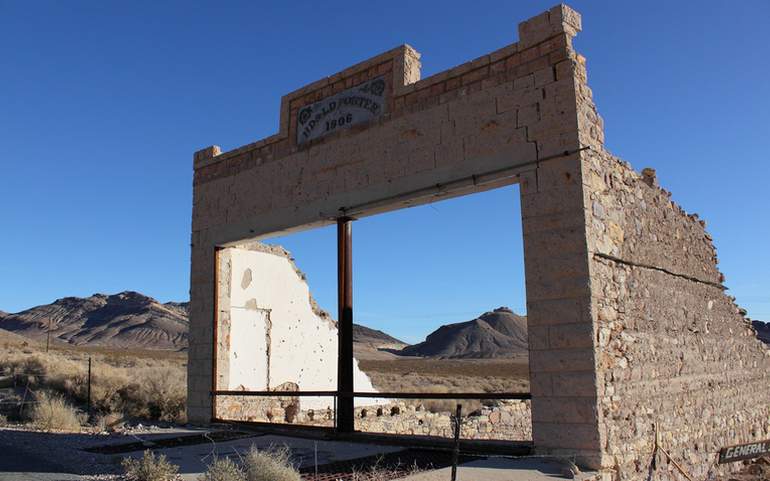
The town of Rhyolite is named after a volcanic rock found in the area. The city was one of several mining camps that sprang to life in the early 1900s after gold was discovered in the surrounding hills. Hundreds of gold seekers flocked to the town during the ensuing gold rush. Within a few years, the population of Rhyolite had reached nearly 4,000 people.

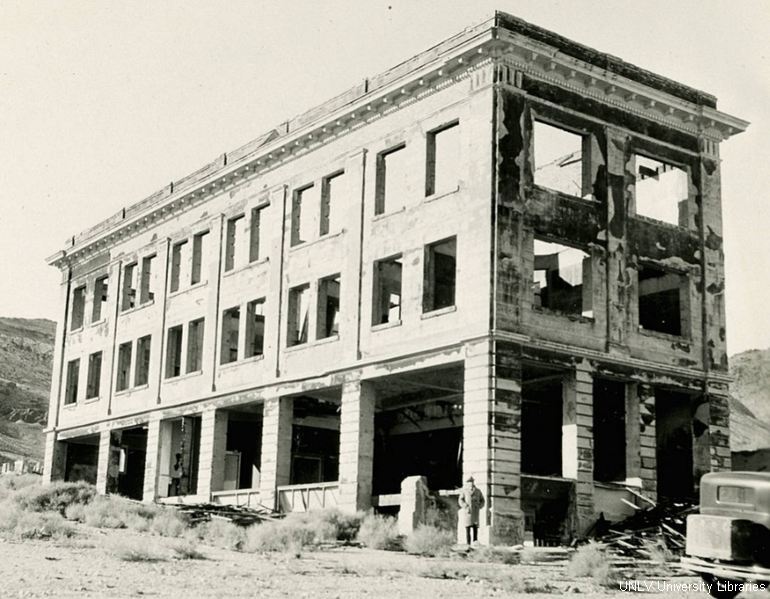
Rhyolite Bank Building
By 1907, Rhyolite had electric lights, water mains, telephones, newspapers, a hospital, a school, an opera house, and a stock exchange. The town boasted several significant buildings, including the train depot, the three-story Cook Bank Building, and a two-story, eight-room school. The Rhyolite Ghost Town Bank Building has been used as a backdrop for several movies and is one of the most photographed buildings in Nevada.
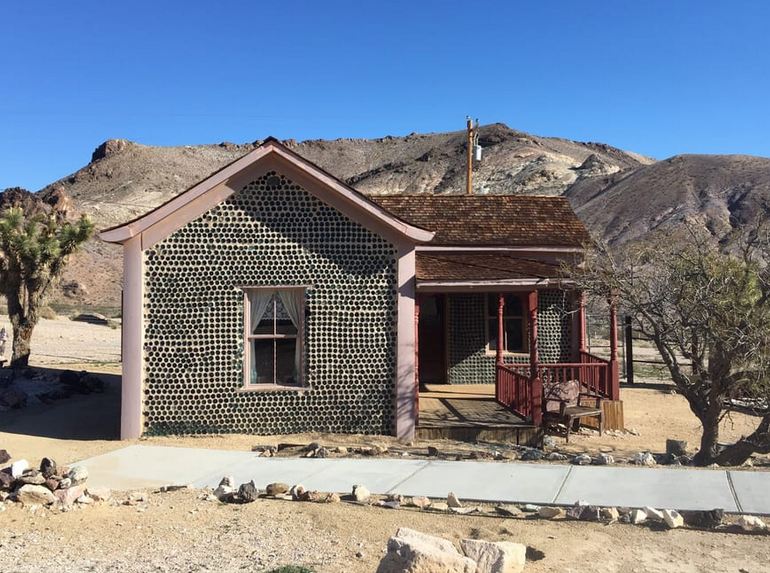
Rhyolite Bottle House
A miner named Tom T. Kelly built the Bottle House in February 1906 from 50,000 discarded beer and liquor bottles. He raffled off the house a few years later for $5 per ticket. The raffle winners, the Bennet family, lived in the bottle until 1914 and then abandoned it. Over the years, Tom Kelly’s Bottle House has been used as a movie set, a museum, and a residence. Today, the Bureau of Land Management maintains the Rhyolite Ghost Town bottle house.
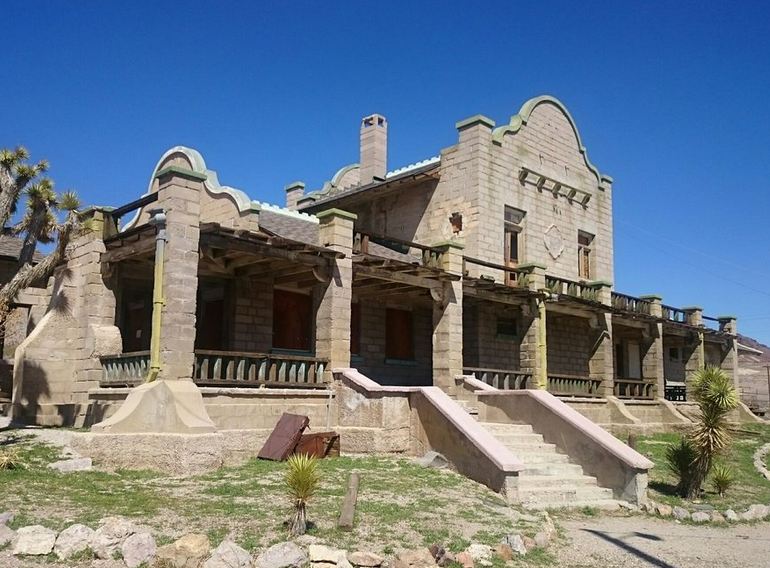
Rhyolite Ghost Town Train Depot
The Rhyolite Ghost Town Train Depot was built in 1905 and severed three railroads, the Tonopah & Tidewater, Las Vegas & Tonopah, and Bullfrog Goldfield Railroad. Trains operated until 1914, when the line was abandoned.
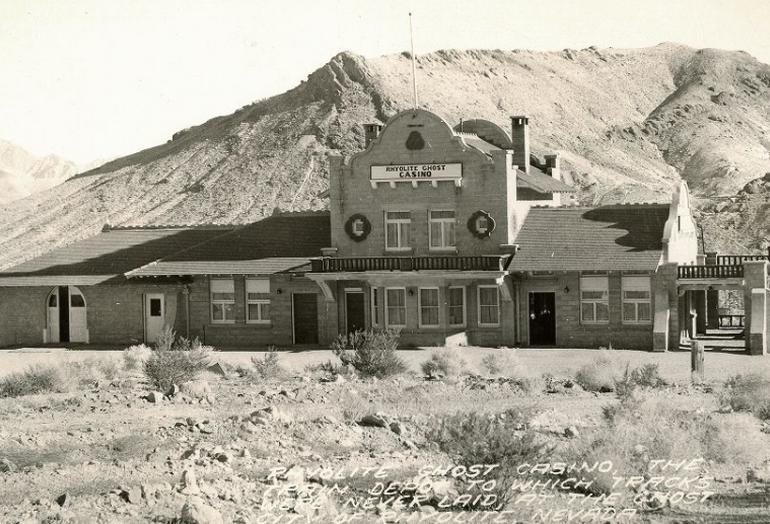
1937, the train depot was converted into a casino and bar named the Rhyolite Ghost Casino. Later, it was transformed into a small museum and remained open until the 1970s. Today, the Train Depot is fenced off to prevent vandals from entering the site.
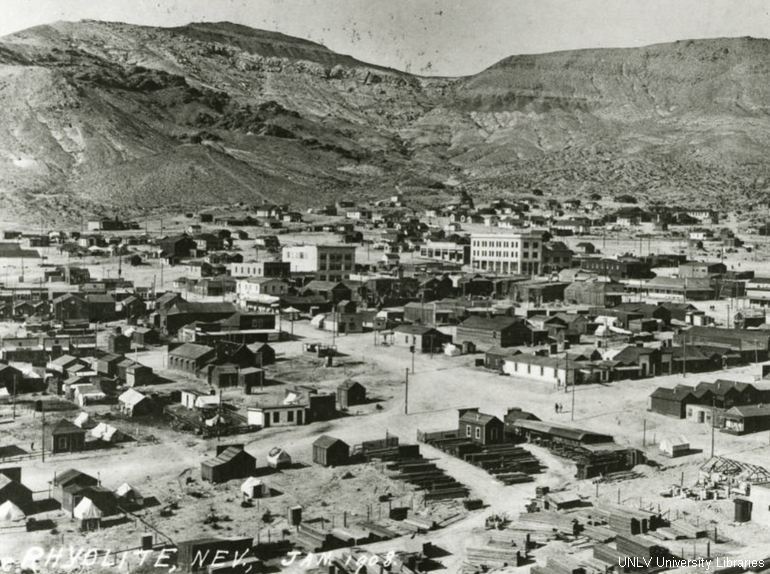
The Decline of Rhyolite
Rhyolite declined almost as rapidly as it rose. After the richest ore was exhausted, production dropped, and folks began to leave as fast as they came. By 1920, the population of Rhyolite was near zero. During the following years, Rhyolite and its ruins became a tourist attraction. Many of the town’s structures were salvaged for building materials or were moved to the nearby town of Beatty. The remaining buildings crumbled into ruins.

Rhyolite Ghost Town Today
Rhyolite is a true Ghost Town and has no permanent residents. A few signs explain the history and remain, but other than that, you are on your own to explore the ruins. The Bureau of Land Management maintains the historic townsite and offers photographers, explorers, and ghost town enthusiasts an enjoyable experience.
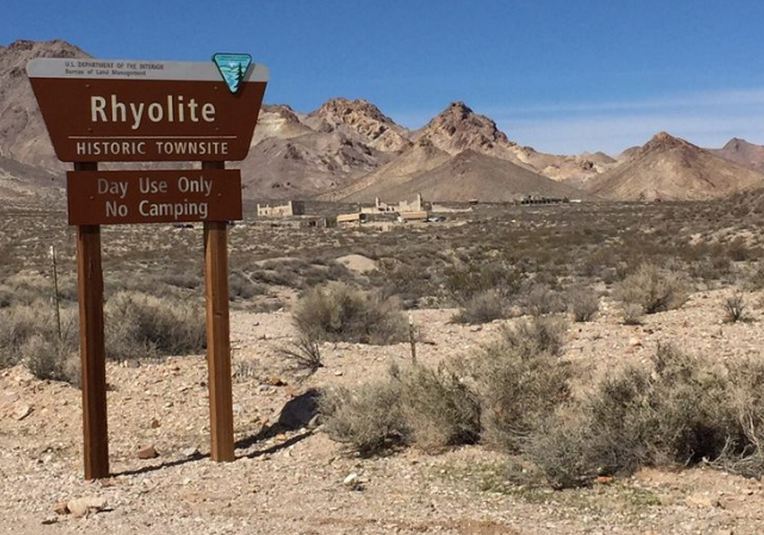
Getting To Rhyolite Ghost Town
Rhyolite Ghost Town is 35 miles from the Furnace Creek Visitor Center in Death Valley and 4 miles west of Beatty, Nevada. There is a paved road off NV-374 (Rhyolite Road), or if you feel adventurous, you can follow the grade of the Tonopah & Tidewater railroad from the outskirts of Beatty to Rhyolite. A 4WD vehicle is recommended for this route. Don’t be surprised if you are the only visitor in town.
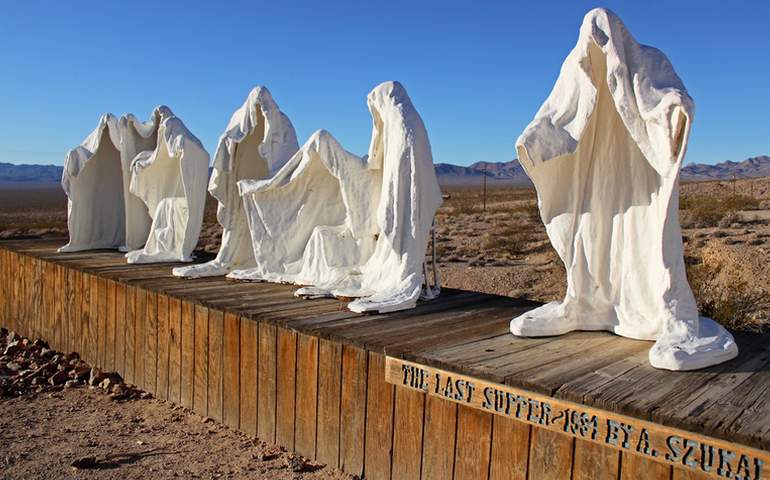
Nearby Goldwell Open Air Museum
Belgian artist Albert Szukalski created The Last Supper at his nearby sculpture park. The art is part of the Goldwell Open Air Museum, an outdoor complex with several unique works of art, including Ghost Rider and Lady in the Desert. The art park is free and open to visitors 24 -7. Website.
Leave a Reply